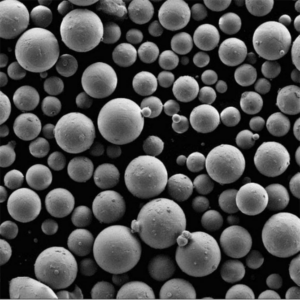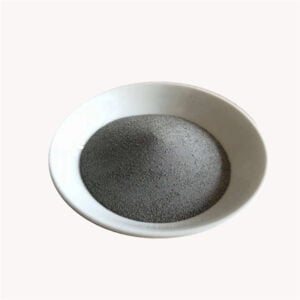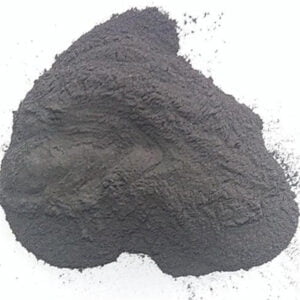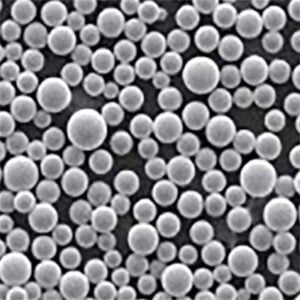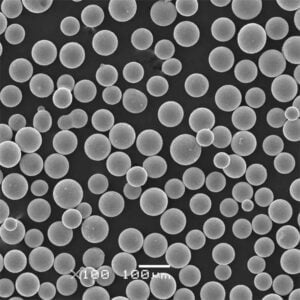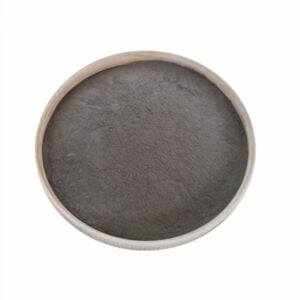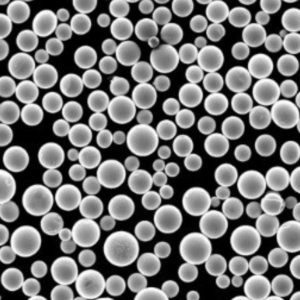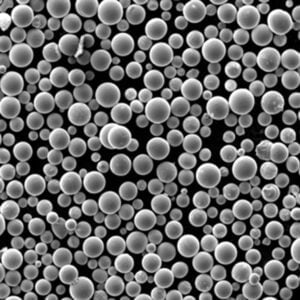チタン・スポンジ・パウダー
目次
チタン・スポンジ・パウダー は、チタン金属部品や製品を製造するための原料として使用される重要な材料である。この粉末冶金ルートは、鉱石からの抽出と比較していくつかの利点を提供します。この記事では、スポンジチタンの組成、主な特徴、加工方法、用途、サプライヤーなどを含むスポンジチタンの概要をご紹介します。
チタンスポンジ粉末の概要
チタンスポンジは、チタン金属部品を製造する粉末冶金で使用される原料である非合金チタンの多孔質形態である。鉱石から得られる四塩化チタン(TiCl4)をマグネシウムやナトリウムで還元することで調製されます。
スポンジ粒子は高い表面積と反応性を持つため、真空アーク再溶解(VAR)、熱間静水圧プレス(HIP)、積層造形、金属射出成形、粉末鍛造などのプロセスを用いて、粉末、インゴット、ミル製品、部品に容易に変換することができる。
以下は、スポンジチタン粉末の特性、用途、世界生産量、価格などの概要です。
チタンスポンジ・パウダー - 主要詳細
| パラメータ | 詳細 |
|---|---|
| 構成 | 非合金チタン(>99%チタン) |
| 粒子形状 | 多孔質、不規則な形状のスポンジ粒子 |
| 粒子径 | 通常15mm以下 |
| 純度 | >=98%、99.9%まで可能 |
| 密度 | 2.2 - 2.7 g/cc |
| 融点 | 1668℃ |
| 主要特性 | 低密度、高強度、高温でも優れた耐食性 |
| 主な用途 | チタン金属粉末、ミル製品、添加剤製造用原料 |
| 世界の年間生産量 | ~300,000トン、米国で75,000トン、中国で100,000トン |
| コスト | ~CP-Tiグレードのスポンジは1kgあたり$8-15 |
チタンスポンジは、ニアネットシェイプと粉末冶金技術を使用することで、材料の無駄が多い複数の溶融-ミル溶接工程を含む従来のインゴット冶金と比較して、経済的なチタン部品の製造を可能にします。
次に、スポンジチタン粉末の組成と特性についてさらに詳しく検討する。
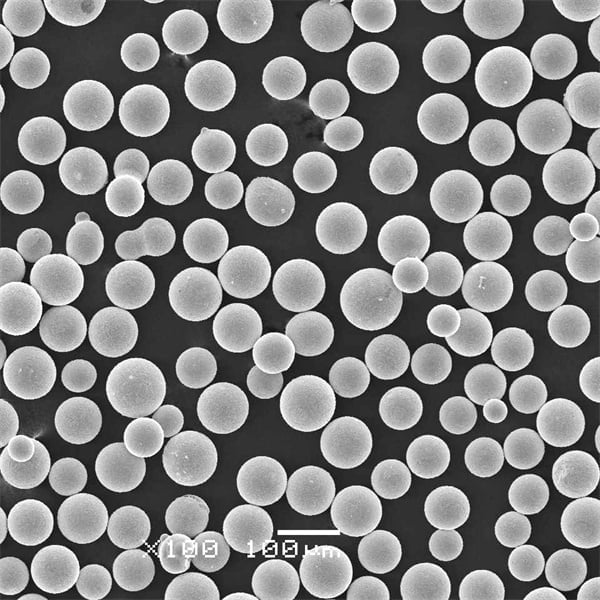
構成 チタン・スポンジ・パウダー
チタンスポンジ粉末は、塩化物、マグネシウム、鉄、ケイ素、窒素、炭素、酸素などの少量の不純物を含むチタン金属の多孔性凝集体からなる。重要な航空宇宙用途には、酸素と窒素の含有量が少ない高純度のスポンジが必要です。
チタンスポンジの組成
| エレメント | 重量 % |
|---|---|
| チタン(Ti) | 98 – 99.9% |
| 酸素 (O) | 0.08 – 0.45% |
| 窒素(N) | 0.02 – 0.15% |
| カーボン(C) | 0.04 – 0.16% |
| 鉄(Fe) | 0.15 – 0.5% |
| 塩化物(Cl) | 0.10 – 0.30% |
ASTM国際規格 ASTM B837 は、スポンジグレードに基づく商業純度の非合金スポンジチタンの要件を以下のように規定している:
チタンスポンジのASTM規格
| グレード | チタン含有量 | 酸素含有量 | 鉄分 | 窒素含有量 |
|---|---|---|---|---|
| CPチタン グレード1 | 99.2%分 | 最大0.40% | 最大0.20% | 0.03%最大 |
| CPチタン グレード2 | 98.9-99.5% | 最大0.25% | 最大0.30% | 0.05%最大 |
| CPチタン グレード3 | 98.3-99.2% | 最大0.35% | 最大0.30% | 0.05%最大 |
| CPチタン グレード4 | 97.75-99.2% | 最大0.40% | 最大0.50% | 0.05%最大 |
航空機エンジン部品のような重要な用途には、低レベルのOとNを制御した高純度のスポンジパウダーが必要です。Ti-6Al-4Vグレード5やグレード23のような99.5%+チタンが指定されるのはこの場合です。
次に、スポンジチタンをあらゆる産業において優れたエンジニアリング素材にしている主な特性について見てみましょう。
チタンスポンジ粉末の特性
チタンは、500℃を超える高温下でも高い強度を維持し、低密度というユニークな組み合わせで評価されています。また、過酷な環境下でも優れた耐食性を発揮します。
スポンジチタン粉末の主な特性は以下の通り:
チタン金属スポンジの特性
| プロパティ | 詳細 |
|---|---|
| 密度 | 4.5g/cm3、鋼とニッケル合金のほぼ半分 |
| 引張強さ | CPグレードは340~450MPa、Ti合金はそれ以上 |
| 降伏強度(耐力) | CPグレードのスポンジの場合、170~380 MPa |
| 融点 | 1668 ± 10°C |
| ヤング率 | 100-115 GPa、鋼鉄より低い |
| ポアソン比 | 0.32-0.34 |
| 熱膨張係数 | 8.5 x 10-6 /K (20-100°C) |
| 熱伝導率 | 20℃で6.7~21W/m.K |
| 電気抵抗率 | 420-470 nΩ.m at 20°C |
| 磁気 | 非磁性 |
| 耐食性 | 保護酸化被膜により優れている |
| 生体適合性 | 生体不活性に優れた素材 |
軽量、低温から高温まで高い強度、耐腐食性、耐熱性を併せ持つチタンは、航空宇宙、化学、発電、自動車、海洋、バイオメディカル産業などにおいて不可欠な存在となっている。
次に、スポンジチタン粉末の主な用途と使用方法について、各産業分野別に見ていきます。
の応用 チタン・スポンジ・パウダー
スポンジチタンの主な工業用途には以下の分野が含まれる:
チタンスポンジ粉末の用途
| セクター | アプリケーション |
|---|---|
| 航空宇宙 | ジェットエンジンおよび機体部品、ブレード、ファスナー、着陸装置 |
| 発電 | 蒸気タービンおよびガスタービン用部品、熱交換器 |
| 化学処理 | タンク、容器、熱交換器、パイプ、ポンプ |
| マリン | 船舶、潜水艦、海上プラットフォーム用部品 |
| 自動車 | コネクティングロッド、バルブ、スプリング、ファスナー、エキゾースト |
| バイオメディカル | インプラント、人工関節、手術器具、機器 |
| 石油 | ドリルストリング、坑口システム部品 |
| スポーツ用品 | ゴルフクラブ、テニスラケット、自転車 |
| ミリタリー | 航空機、船舶、装甲製品 |
| 海水淡水化 | 熱交換器、圧力容器、チューブ |
チタンの使用は、航空宇宙、化学処理、発電、海水淡水化などの産業において、年平均成長率8-10%で伸び続けている。市場需要は現在の300,000トンから2030年までに約575,000トンに増加すると予測されている。
スポンジチタン粉末から派生する様々な製品形態を見てみよう。
チタンパウダーの種類と形状
チタン金属粉末およびミル製品は、真空アーク再溶解(VAR)、熱間静水圧プレス(HIP)、積層造形(AM)、金属射出成形(MIM)などのプロセスを使用して、スポンジ原料から製造される。
スポンジから生まれたチタンパウダー製品
| 形状 | 詳細 |
|---|---|
| ヒドリド脱水素(HDH)パウダー | 不規則形状<150μmサイズの粉末 |
| ガスアトマイズ球状粉末 | AMに使用される球状15-150μmサイズ |
| 合金プレアロイ粉末 | Ti-6Al-4V、Ti-6Al-2Sn-4Zr-6Moなど。 |
| VARインゴット、ビレット | 再溶解インゴットおよび鍛造製品 |
| HIP粉末冶金製品 | カスタムニアネットシェイプ部品 |
| 金属射出成形用原料 | MIMプロセス用粉末 |
| 粉末鍛造コンロッド | 自動車、船舶用 |
| 積層造形用原料 | レーザーパウダーベッド、ダイレクトレーザーデポジション |
これらのミル製品はさらに、各産業分野で完成部品や最終製品に加工される。
次に、チタンメタルスポンジパウダーの製造プロセスとサプライチェーンについて検討する。
チタンスポンジの製造工程
チタンスポンジ粉末は、厳格な工程管理の下、ナトリウムまたはマグネシウムを用いて四塩化チタン(TiCl4)を還元することにより商業的に生産される。TiCl4自体は
クロードが提供するリンクは、常に有効で最新であるとは限りません。リンクの正確性を向上させるため、ご理解をお願いいたします。
スポンジチタン製造の基本ステップは以下の通り:
チタンスポンジ製造工程
- 鉱石から二酸化チタン(TiO2)を抽出する
- クロライドプロセスを使用してTiO2を四塩化チタン(TiCl4)に変換する。
- 800~850℃の真空下、マグネシウム/ナトリウムでTiCl4を還元する。
- 塩を拡散させ、純チタンを凝縮させる
- 粉砕、洗浄、ふるい分けによる多孔質チタンスポンジの加工
について スポンジチタン粉 は反応性と発火性が高い。そのため、発火や爆発の危険を防ぐため、アルゴンのような不活性雰囲気下で取り扱われ、保管される。
多孔質の不規則な形状のスポンジ粒子は、体積に対する表面積の割合が非常に高く、その後の溶融および粉末圧密工程での効率的な脱ガス、圧縮、合金化を可能にする。
スポンジチタンの生産量の約75%はチタンミル製品の製造に使用される。残りの25%は、積層造形や粉末冶金用途のチタンパウダーの製造に利用される。
世界の生産量と主要サプライヤー
現在、世界のスポンジチタン生産量は年間約30万トンである。地理的にはアメリカと中国に集中しており、世界の生産量のほぼ60%を占めている。
世界の主要なチタンスポンジメーカーには以下のようなものがある:
チタンスポンジの主要メーカー
| 会社概要 | 所在地 | 定員 |
|---|---|---|
| VSMPO-アビスマ | ロシア | 52,000トン |
| ウエスタン・チタン | アメリカ | 30,000トン |
| 東邦チタニウム | 日本 | 20,000トン |
| UKTMP JV | カザフスタン | 30,000トン |
| ノースウェスト・インスティテュート・オブ・NTM | 中国 | 20,000トン |
| ZTMC | 中国 | 15,000トン |
米国は、航空宇宙分野における戦略的懸念から、ロシアと中国へのチタン輸出規制を提案している。これによりサプライチェーンが再編され、他地域での生産拡大が促進される可能性がある。
全体として、世界的に設置容量の増加が予想され、様々なユーザー産業にサービスを提供するスポンジチタン製造業者や貿易業者にとって成長の機会がある。
コスト分析と価格動向
チタン・スポンジ・パウダー 価格は、供給量、グレード/品質、地域、納品スケジュール、長期契約、その他の商業的要因によって1kgあたり$8~16の範囲で変動する。
チタンスポンジの価格帯
| グレード | kgあたりの価格 |
|---|---|
| CPグレード1 | $8 – 12 |
| CPグレード2 | $10 – 14 |
| CPグレード3 | $12 – 15 |
| CPグレード4 | $10 – 16 |
| Ti 6Al-4V グレード5、グレード23 | $14 – 20 |
2022年の価格は、パンデミック後の航空宇宙産業やその他のセクターにおける旺盛な需要回復と、エネルギー、原料、物流コストの上昇により急上昇した。
しかし、2023年半ばからは、世界のスポンジ生産能力が上昇し、多少の緩和が予想される。チタンスポンジ需要は今後10年間、年平均成長率6-8%で安定的に成長すると予測されており、業界全体の見通しは引き続き明るい。

よくあるご質問
Q.チタンスポンジとは何ですか?
チタンスポンジは高純度のチタン金属を多孔質にして粉末状にしたもので、チタンミル製品、粉末、部品を製造するための原料として各産業分野で使用されている。
Q.スポンジチタンはどのようにして作られるのですか?
鉱石から得られる四塩化チタン(TiCl4)を、厳密に管理された条件下でマグネシウムまたはナトリウム金属を用いて還元することにより商業的に生産される。
Q.スポンジチタンの用途は?
主な用途は、航空宇宙エンジンや機体、発電プラント、化学プラント、海洋ハードウェア、生物医学インプラントや機器などである。高強度、低重量、耐腐食性の金属部品を必要とする産業に役立っている。
Q.チタンとスチールの利点は何ですか?
チタンは鋼鉄と比較して、より高い強度対重量比、優れた高温特性、非磁性反応、および要求の厳しい用途に有益なはるかに優れた耐食性を提供します。
Q.スポンジチタンの主要メーカーはどこですか?
世界の主な生産者には、VSMPO-Avisma、ウエスタンチタニウム、東邦チタニウム、UKTMP JV、NTM北西部研究所、ZTMCなどがあり、現在の生産能力は年産15,000トンから50,000トンである。
Q.スポンジチタンの価格帯はどのくらいですか?
価格は、品位、注文サイズ、地域、納品スケジュール、その他の商業的要因によってkgあたり$8-16の範囲で変動する。複数年契約も、買い手と売り手の実質的な実現価格に影響を与える。
シェアする
MET3DP Technology Co., LTDは、中国青島に本社を置く積層造形ソリューションのリーディングプロバイダーです。弊社は3Dプリンティング装置と工業用途の高性能金属粉末を専門としています。
関連記事
Met3DPについて
最新情報
製品

3Dプリンティングと積層造形用金属粉末






